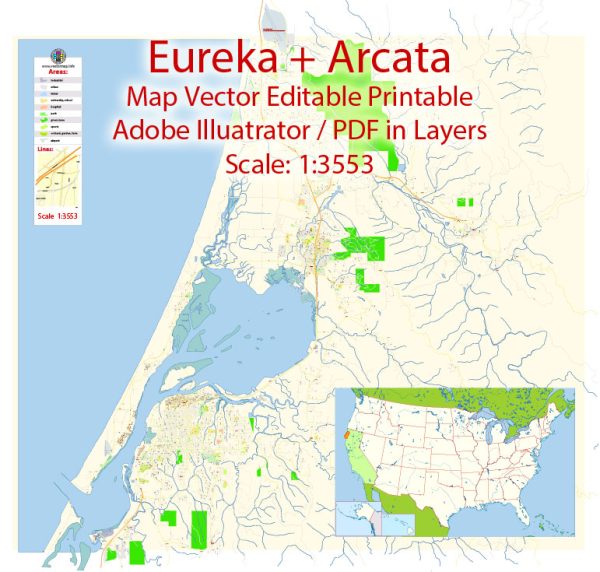The cities of Arcata and Eureka are located in Humboldt County, California, and have distinct histories of urban development that reflect the region’s unique geography, economy, and cultural evolution. Here’s a brief overview of their historical development:
Arcata:
- Indigenous Peoples: Before European contact, the area around Arcata was inhabited by indigenous peoples, particularly the Wiyot tribe. The Wiyot people had a rich culture and relied on the natural resources provided by the region.
- European Settlement: European settlers arrived in the 1850s, drawn by the rich natural resources of the area, including the lush forests and fertile lands. Arcata developed as a lumber town, and the logging industry became a major economic driver.
- Economic Growth: The late 19th and early 20th centuries witnessed significant economic growth in Arcata, primarily due to the timber industry. The city’s economy also diversified into agriculture, with dairy farming becoming an important sector.
- Environmental Concerns: The environmental impact of logging and the conservation movement in the mid-20th century led to increased awareness of sustainability and forest management. Logging practices and land use planning were adapted to address these concerns.
- Humboldt State University: Arcata is home to Humboldt State University, which was founded in 1913 and has contributed to the city’s cultural and educational development.
Eureka:
- Early History: Eureka was founded in the mid-19th century during the California Gold Rush. Its strategic location on Humboldt Bay made it an important port for shipping and transportation.
- Timber Industry: Similar to Arcata, Eureka’s early economy revolved around the timber industry, and it became a hub for processing and shipping timber products.
- Commercial and Industrial Hub: Eureka’s position on the bay and its rail connections allowed it to become a significant commercial and industrial center for Northern California. It served as a regional shipping and trade hub.
- Victorian Architecture: Eureka boasts a well-preserved historic district with many beautiful Victorian-era buildings, which are a testament to its past prosperity and remain a significant cultural and architectural feature.
- Diversification: Over time, Eureka’s economy diversified into various sectors, including fishing, healthcare, education, and government services. The city continues to be an important center for commerce and government in Humboldt County.
Both cities have experienced shifts in their economies, partly due to changes in resource extraction industries and a growing focus on environmental sustainability. Today, they are known for their vibrant communities, cultural diversity, educational institutions, and efforts to balance economic development with environmental preservation. The natural beauty of the surrounding redwood forests and the Pacific coastline also play a significant role in the region’s development and identity.


 Author: Kirill Shrayber, Ph.D.
Author: Kirill Shrayber, Ph.D.